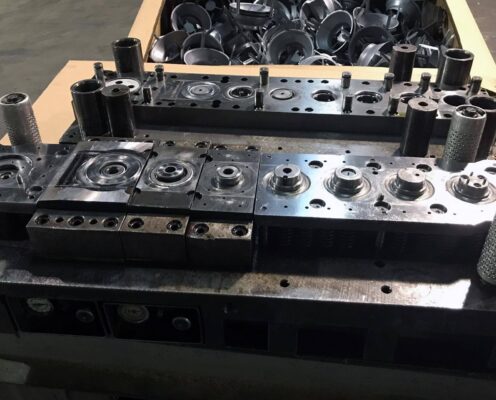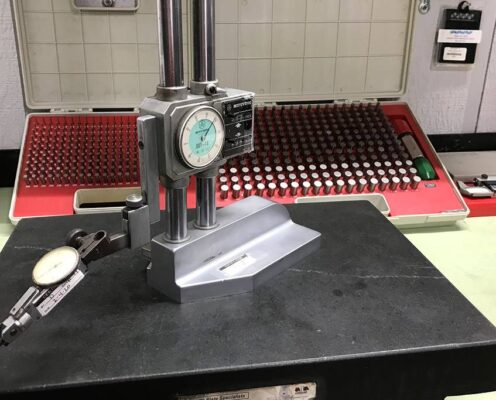A transfer stamping press is a machine that houses multiple dies, each designed to perform specific operations on individual blanks. The press uses a transfer mechanism—mechanical fingers, automated systems, or robots—to move the blank from station to station, ensuring precise positioning for each step of the process. This setup allows for producing large or intricate parts that require multiple forming operations.
Transfer Stamping Process
The transfer stamping process involves the following steps:
- Blank Loading: Individual blanks are loaded into the press, either manually or automatically.
- Transfer Mechanism: The blanks are moved from one station to the next using a transfer system, which ensures precise alignment and positioning.
- Sequential Operations: Each station performs a specific task, such as cutting, punching, bending, or forming. These operations are designed to gradually shape the part.
- Final Part Ejection: Once all operations are complete, the finished part is ejected for inspection and quality control.
This process is highly efficient and allows for producing parts with complex shapes and features.


